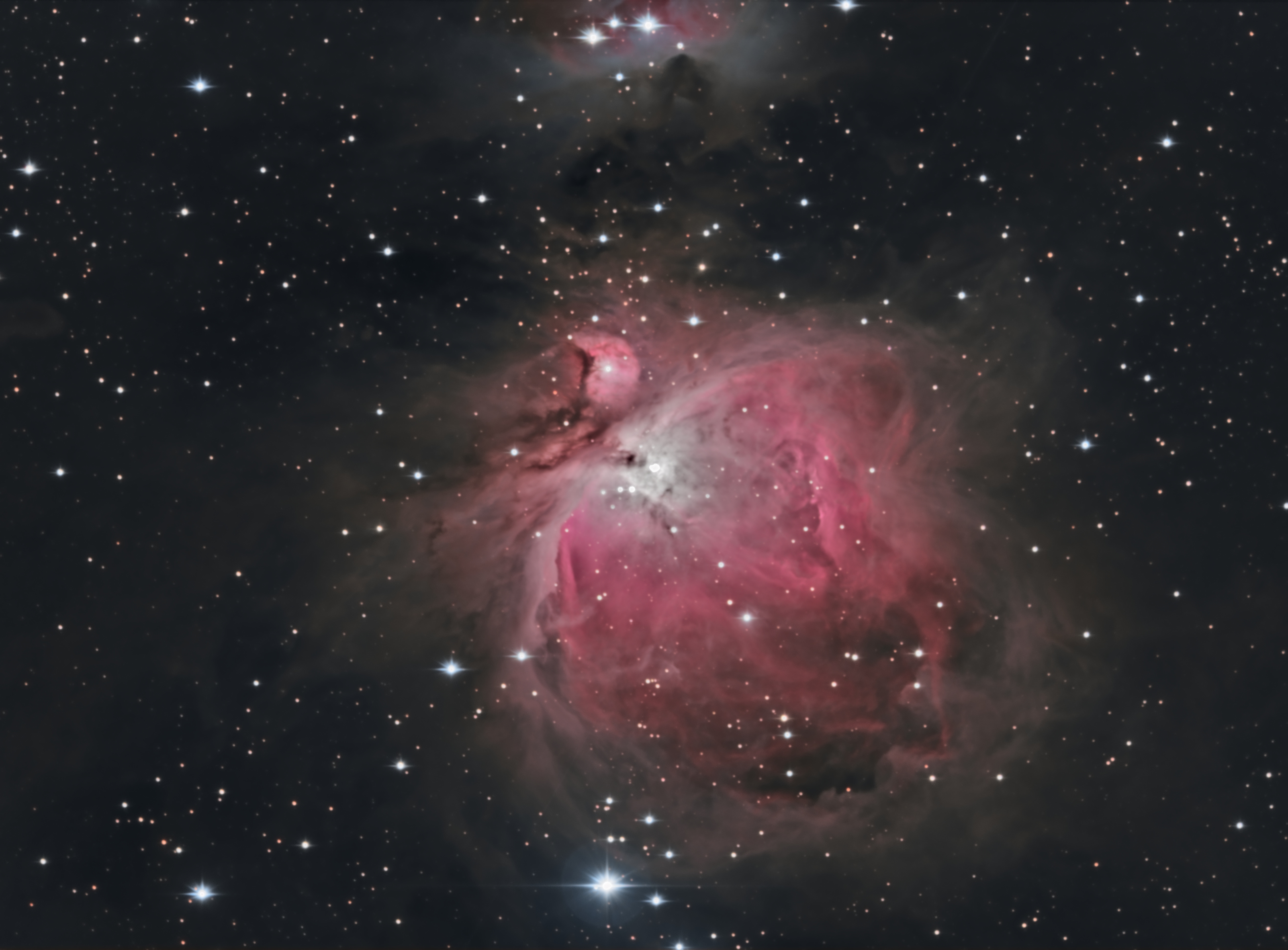

Image of Orion Nebula obtained by Rod Michael (member of Black Hills Astronomical Society) in Rapid City, SD:
General Information Messier 42 (M42), the Orion Nebula. M42 is the closest (approximately 1,344 light-years from Earth) and is the easiest to find star-forming region in the Milky-Way (our home galaxy). M42 is located in the constellation Orion (The Hunter). The nebula is a cloud of dust and gas, is approximately 20 light-years in diameter, and is estimated to have a mass equivalent to about 2,000 of our suns. It is the most visible such feature for the unaided eye and is very popular with amateur astrophotographers. A NASA video of the nebula (composed of many different photos) provides a closer look at this deep sky object (DSO).
To find M42 in mid-Winter, look in the southern half of the sky and, in the early evening, look approximately due South about 50 to 60 degrees above the horizon. The 3-stars of Orion’s “belt” are perhaps the most identifiable feature. South of Orion’s belt you can find the “tip of Orion’s sword,” a small cluster of stars. This is the region of the nebula. If you use binoculars, you’ll be able to see the nebula; although, probably not in color.
Image Technical Information:
Total Number of Exposures (Sub-Frames):
240
Total Exposure Time: 5.92 hours
·
Unfiltered Light (Luminance): 30
x 2.5 minutes (1.25 hours); 30 x 20 sec (10 minutes)
·
Red Filter: 30 x 2.5 minutes (1.25
hours); 30 x 30 sec (15 minutes)
·
Green Filter: 30 x 2.5 minutes (1.25 hours); 30 x 30 sec (15 minutes)
·
Blue Filter: 30 x 2.5 minutes (1.25
hours); 30 x 30 sec (15 minutes)
Equipment:
TELESCOPE/ASTROGRAPH: Celestron 11" RASA, f2.22
MOUNT: Software Bisque Paramount MX+
GUIDING: Software Bisque SkyX Pro with TPoint Add-On + Protrack
CAMERA: QSI683WS with 5-Position Internal Filter Wheel
SOFTWARE: Software Bisque SkyX Pro and PixInsight
OBSERVATORY: SkyShed POD + SkyShed Permanent Pier